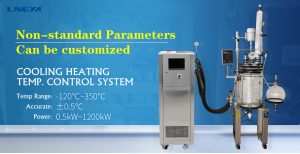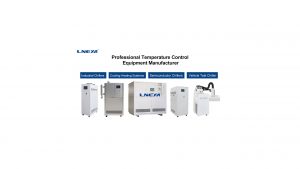Test of working temperature of electric vehicle power battery
The normal working temperature
range of power batteries for electric vehicles is -30 ~ 52 ° C, and the working
temperature range is -46 ~ 66 ° C, which is difficult to achieve with existing
power batteries. Although local warming measures can be used for battery packs,
they increase costs. Each type of battery has an optimum operating temperature
range, beyond which battery performance will be reduced or impaired. Therefore,
before the production of power batteries, manufacturers need to perform related
temperature tests or inspection agencies to perform similar tests.
The cooling and heating
system components of electric vehicles must be tested at different pressure
levels and temperatures. The performance and power consumption of these systems
must be tested to ensure that they do not significantly reduce the mileage of
the vehicle. In a typical test, a complete auxiliary heater or component, such
as a valve, hose, and other hollow valve, is inserted into a test slot on a
pressure cycle table.
A cooling circuit is
usually tested in a temperature range of minus 40 to 20 degrees, while a
heating circuit is tested in a temperature range of 20 to 140 degrees. Power
consumption and performance are usually tested at alternating temperatures.
Low-voltage or high-voltage power sources can be selected, and operation can be
simulated with on-board batteries and generators or traction accumulators. In
many electric vehicles today, heating and cooling systems can drain the
battery, negatively affecting the mileage of the car. By comparing the test
results before and after the load test on the pressure cycle test bench, we can
see how the change in battery power consumption and performance affects the
service life of the vehicle.
A comprehensive
long-term test usually takes 20 to 30 days, depending on how often the load
changes. The temperature and volume flow of the test medium and the ambient
temperature (if the test takes place in a climatic chamber) vary according to
the test specifications. The temperature and flow rate, pressure, and pressure
drop of the inlet and outlet of the test object circuit are continuously
measured. The test here focuses on the thermal and electrical performance of
the heating and cooling device under different environmental conditions.
Lneya’s new energy battery cooling
and heating system KRY series is widely used in production lines or testing
departments of related companies in China. The temperature control precision is
high, and the single fluid medium temperature control saves resources and
costs.
(The relevant information comes from the
Internet. If you have any questions, please contact the editorial department.)
Raccomandazioni correlate
-
Temperature control of integrated circuit/chip wafer quality and reliability test items
1213The most basic part of making a chip is design-tape-package-test. The chip cost structure is generally 20% of labor cost, 40% of tape, 35% of package, and 5% of test. The test is actually the most in all aspects of the chip. "Cheap" step, but the...
Visualizza i dettagli -
What are the main equipment needed for industrial chillers?
819Main equipment of industrial chiller: compressor, condenser, expansion valve, evaporator, chilled water pump, cooling water pump cooling tower (water cooling) Selection: know the required inlet and outlet water temperature, the required cooling ca...
Visualizza i dettagli -
Battery test chiller operation evaporating temperature description
1226In the current new energy vehicle battery test equipment, the use of more batteries to test the chiller evaporation temperature has a certain impact on the equipment, then what is the specific impact? When the battery test chiller heat load increa...
Visualizza i dettagli -
Why is it dangerous to use an enamel reactor?
1203The enamel layer of the enamel reaction kettle is easy to burst when it is cold and hot. Because the enamel layer is sintered on the surface of the enamel reaction kettle, and the enamel layer will melt when it exceeds 200 degrees Celsius, so the...
Visualizza i dettagli
 Refrigeratori industriali LNEYA Produttore Fornitore
Refrigeratori industriali LNEYA Produttore Fornitore














